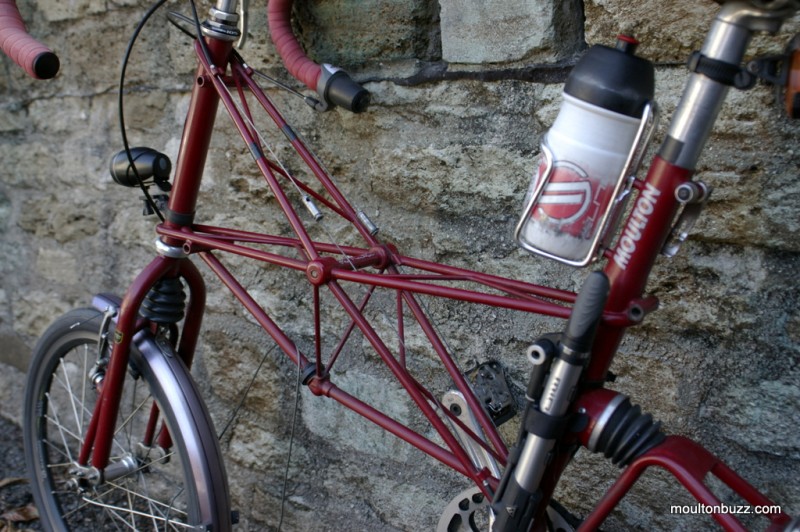The Moulton APB (All Purpose Bicycle) was produced from 1992 until approximately 2005.
The APB reflected Dr Alex Moulton's desire to produce a lower cost, higher volume spaceframe Moulton, "less sophisticated... yet containing all the essential features". It was produced under licence by Pashley, at their factory in Stratford upon Avon.
The APB borrowed many of the design features of the AM-ATB, including 20 inch (406mm) wheels, and "hairpin construction", which involved fewer frame joints to be brazed, and therefore cost less to produce.
As the name suggests, the APB was a bicycle suited to a number of purposes, and could be ridden on a variety of terrains. Over the period that it was produce, the APB was sold with many different specifications, from the original 12 speed derailleur equipped model, various hub geared models, and some dual-drive models. Derailleur equipped models were initially 6 speed, and towards the end were available with 9-speed cassettes.
Brakes were initially cantilever, and later v-brakes were used. Initially, all frames were separable in a fashion similar to the AM models. However, the fx8 model, as well as some other models that followed, was a fixed, non-separable frame.
Unlike the more expensive AM range, which typically used Reynolds 531 tubing, the APB used high tensile steel tubing. However, later models features Reynolds 531 seat tube and forks.
In 2005, the APB was replaced by the TSR, which was similar in principle, but featured many design improvements.
[flickr]http://www.flickr.com/photos/moultonbuzz/4648370865/[/flickr]




Hello
I have just bought an apb dd 24.
My first Moulton space frame since using my brothers in 1984.
I would like to raise the handlebar stem or fit a fully adjustable one which will probably require cable extensions.
Could you tell me what parts I will need and where to find them?
many thanks
regards
Michael Kramer
Truro
i have just passed through the information on the moulton models. i have found you are missing the ATB?
This 20″ wheeled bicycle preceded the ATB and was the model upon which the ATB was modelled.
It is a shame your record is incomplete?
cheers John McMonnies